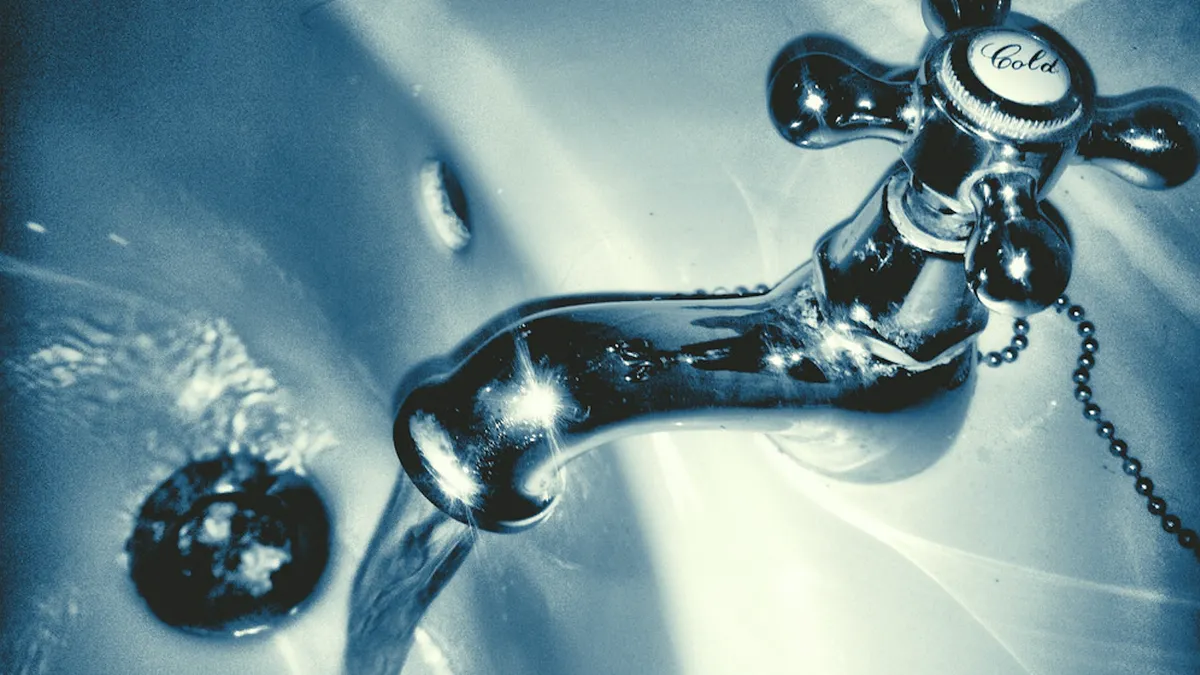Editor's Note: The following is a guest post from Jon Freedman, SVP of global government affairs at SUEZ.
Water supply and quality has moved to the forefront of public priorities across the globe. According to a report from Harvard University, nearly half of the United States' 204 fresh water basins may not be able to meet their monthly water demands by 2080.
We're already seeing parts of the Colorado River run dry, reservoirs that support California and Arizona are less than 40% full and Florida's aquifers face increased salt water intrusion as they pump to support growing populations.
While the average American uses between 80 and 100 gallons of water a day, the economy is dependent on water in ways few people consider. Refineries that make gasoline, power plants that generate electricity and even the server farms used by tech giants all use tremendous amounts of water.
Technology needed to solve the water scarcity issues we face today exists, and it can be used to build smarter, more resilient cities.
Big ideas in water
In the U.S., we're used to turning the handle on a faucet and water coming out. But something interesting happens between the time water leaves the treatment plant and the time it flows out of the tap. Between 14%-18% of the clean water is lost due to aging infrastructure and leaky pipes. That's a tremendous waste of the money it takes to treat the water, to say nothing of the water itself.
Finding leaks in underground pipes has never been easy, but that's changing. Municipalities are using acoustic technology and predictive algorithms to find and predict water loss. With this type of technology, cities and towns can address problems proactively, before they grow and become more expensive.
While aging infrastructure can be better addressed with advances in technology, the biggest potential source of clean water is something largely untapped in the U.S. It comes from a practice of water reuse, which refers to the concept of capturing wastewater, treating it and using it again. It can be used to irrigate crops in rural areas, or golf courses in urban ones. It can be used in industrial processes to reduce or eliminate groundwater withdrawals. It can also be used to create new, fresh drinking water.
For decades, water scarcity was a problem felt more keenly by western states, like California. Los Angeles has set the ambitious goal of recycling 100% of its wastewater by 2035, a decision that will reduce at least some of the unpredictability associated with climate change.
But water recycling is also being tested in locations that aren't typically associated with shortages.
In Florida, officials have taken a number of steps to recharge underground aquifers with recycled water, the largest source of freshwater in the state. Doing so prevents saltwater intrusion, in which saltwater creeps into wells as freshwater is withdrawn. Nassau County, NY has recently finished a similar aquifer recharge project.
Encouraging the right strategies
There are vast opportunities for water recycling in the U.S., and clear reasons for doing so. Water reuse makes cities more resilient and more capable of supporting growing populations by increasing their ability to withstand unreliable water supplies.
We can't let crisis be the guiding planning principal in solving water challenges. There are a number of strategies that can encourage planning.
Education plays an important role in the encouragement of water reuse. Most communities with active recycling programs launch active campaigns that discuss the cost, quality and need for water recycling.
Communities should also eliminate barriers to development of water reuse. Local plumbing codes may not have provisions for greywater pipes used to transport partially treated water to their end user. Some regulations place strict requirements on water treatment standards, which ignore the needs of end-users. For example, greywater is perfectly acceptable for irrigation and boiler feedstock, yet, some regulations may require treatment to potable water standards nonetheless.
The use of incentives has a place in the discussion as well. Water reuse infrastructure is large and a sizable investment. Incentives encourage investment and can take many forms. Some states have offered subsidies to develop the infrastructure. Others have tied water use to conservation programs, and exempted recycled water use from those strictures.
Americans already use approximately 430 million gallons of recycled water per day. And there are signs that reuse could increase.
Earlier this year, the EPA announced plans to develop a Water Reuse Action Plan that will present a comprehensive, national framework for encouraging water recycling at the state, local and industrial level. That roadmap was unveiled at the WateReuse Symposium this month.
These are encouraging signs. But avoiding water scarcity will take years of sustained effort. If cities and industry get it right, scarcity does not have to be destiny.



















